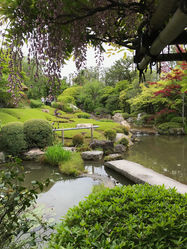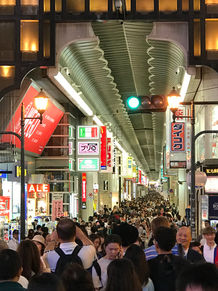
Kyoto: Capital of Culture
Zen gardens, tea ceremonies, onsen. Awe-inspiring beauty, rice fields, midnight ceremonies. Lifelong friends.
During the Spring quarter of my Sophomore year I studied abroad at Doshisha University in Kyoto, Japan through the Stanford Bing Overseas Study Program. Living and studying in the ancient cultural capital truly enriched my life in numerous ways, from exposing me to the delicate arts of Japanese tea, the depths of Japanese religion and the beauty of the hundreds of well-kept gardens dotted around the city, to allowing me to travel and experience the diversity of people, places and food that Japan has to offer. I stayed with an extremely kind and hospitable host family throughout my time there, and learned an incredibly amount of Japanese through speaking with them, only in Japanese, every single day. I am immensely grateful to all the people who made this incredibly journey possible, and would not hesitate to go back and visit Kyoto if I had the chance! I would definitely agree with the somewhat cliché mantra that studying abroad changes your life - in my case it really did! I am a much more confident, adventurous and knowledgeable person now than before I left for my grand adventure across the Pacific, and I am most certainly better for it! Please enjoy the small gallery of Kyoto photos that I have prepared below (click a photo for more details and commentary)!


LANGUAGE LEARNING
French. German. Japanese. Latin. Ancient Greek. And counting!
I have been learning languages for as long as I can remember, and as such they play an extremely formative role in my education. Having gone to school in London, which is a very global city, I was exposed to French, Latin and Ancient Greek in middle school and high school, and then went on to study German at the end of high school and then Japanese upon entering Stanford. I find languages so fascinating as they provide me a window into the mindsets of other cultures and help me better understand the world as a whole! In our rapidly globalizing world, I think that cross-cultural understanding is of paramount importance, and as such I try to develop my knowledge of the world through language learning as much as possible! Below is a slideshow of highlights from my language learning experiences!

SJEC: STANFORD JAPAN EXCHANGE CONFERENCE
A week of fun, friends and cross-cultural exchange.
I was an officer for SJEC, the Stanford Japan Exchange Conference, in 2018. SJEC is perhaps best defined by its official website, which describes the conference as:
"A student-led initiative with the Freeman Spogli Institute for International Studies that hosts a 1 week cultural exchange program between Stanford students interested in Japanese culture and 15 visiting Japanese exchange students from Keio, Doshisha, and Kyoto University. Our program happens every year roughly in the month of February. With over 60 years of history behind our entirely student-run program, as always, the goal of SJEC is to promote further understanding and friendship between the U.S. and Japan through cultural interaction."
SJEC is a wonderful program that helped connect me to Japan students from diverse background and learn about the ways in which the US and Japan can cooperate on an international stage going in to the future!


JSU: JAPANESE STUDENT UNION
Promoting and discussing Japanese culture through inclusive events.
I was a member of Stanford's JSU, the Japanese Student Union, for both my Freshman and Sophomore years. The purpose of Japanese Student Union is to provide support and a social network for Japanese and Japanese American undergraduates and students interested in Japanese culture, society, and current issues, while raising cultural awareness and fostering information exchange with the Stanford community and beyond. During my time as part of JSU I got to both organize multiple and help foster a warm, welcoming club environment as Social Chair in my second year of club membership. Take a look at the slideshow below to find out more about what I got up to with the JSU family!

SKIP: SILICON VALLEY KEIO INTERNATIONAL PROGRAM
Technology. Business. Cooking. Martial Arts. Ikebana. Onsen. Japan in a nutshell.
SKIP is a two-week program held by students from Keio University, which invites over a dozen Stanford students to Tokyo each September (after most internships end!). During the program the Keio students organize a short trip to other cities in Japan, company visits, discussions and many other fun academic and non-academic activities. When I took part in SKIP 2017 we learned how to cook dashi, how to make beautiful ikebana from world-leading experts, and went on a two-day expedition to the beautiful onsen town of Kusatsu! It was a wonderful experience that truly broadened my cultural horizons and exposed me to a wide range of fascinating cultural, artistic and business practices in Japan. I also made lifelong friends through the program, some of whom I still talk to regularly even today!
















